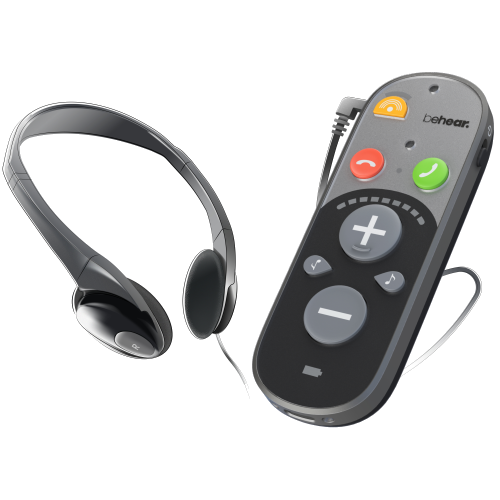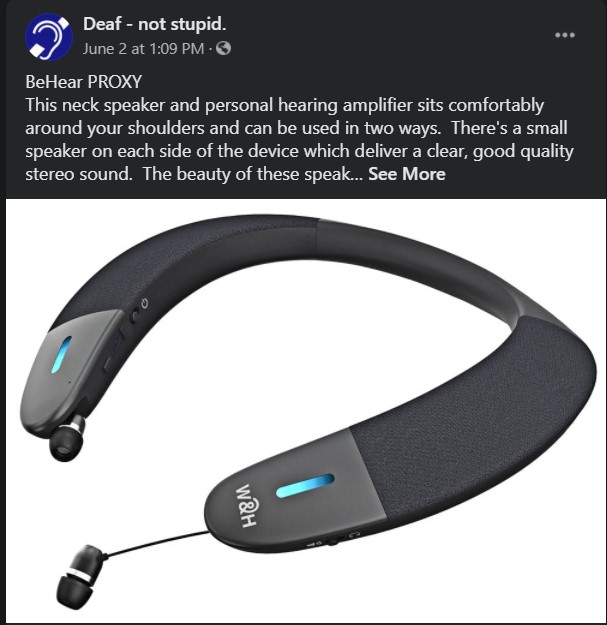Single-Sided Deafness and What You Can Do About It
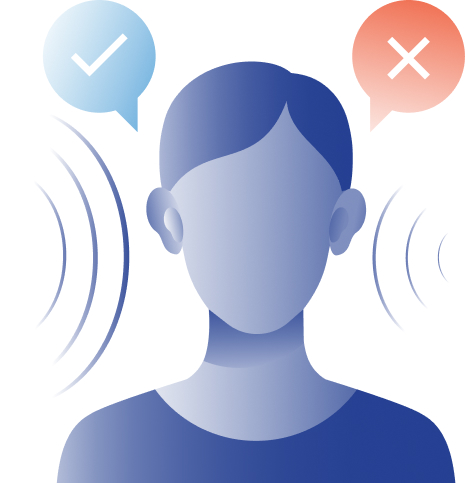
People with Single-Sided Deafness (SSD) inhabit two worlds: the world of normal hearing when sounds originate on the healthy side, and the world of near deafness when sounds come from the impaired side. Although people with SSD may do quite well without help in most quiet indoor situations, they may struggle when the sound of interest is coming from the deaf side, especially in noisy situations.
Most people with SSD need situational help. The classical example is in a car when the impaired or deaf ear is one on the “inside side”. In such cases people with SSD experience serious difficulties communicating with other passengers. For drivers it may even be dangerous as they may turn their head away from the road to pick up passenger voices.
Overall hearing of individuals with SSD can be improved with CROS (Contralateral Routing of Sound) technology. This involves wearing a transmitter on the non-functioning ear that picks up sound from that side and relays it to a receiver worn on the normal/better hearing ear. If amplification is also needed on the better hearing ear (if it has a hearing loss), then the technology is known as BiCROS. Just as with CROS treatment, sound continues to be received and processed only by the better hearing ear.
The CROS/BiCROS function in BeHear ACCESS is fully controlled by the user through the application. This gives the user more flexibility and freedom to use this function or not, depending on the motivation and/or depending on the listening situation. This is the main advantage of the CROS function in BeHear. The user decides when and how to use it, if at all. When it’s not necessary, the BeHear ACCESS earbuds can be removed and fastened securely with their built-in magnets against the user’s chest. When CROS/BiCROS is activated, the user can also combine it with various features available in the app, such as noise reduction and directional microphones, to achieve the most comfortable/intelligible hearing possible.
When the CROS/BiCROS feature is activated, the function takes effect for all ACCESS hearing modes: Personal Hearing, Mobile Calls, and Audio Streaming. Sound from the non-functioning side is transferred to the speaker in the earphone of the hearing ear. Streamed stereo audio is mixed automatically down to mono and reproduced in the functioning ear, thus allowing people with unilateral hearing to enjoy the full sound spectrum without missing out on sounds that would have fallen on the damaged ear.
“I like not having to depend on a hearing professional to hear better”
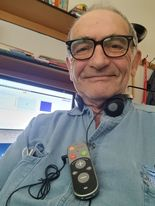
We first “met” Michel Baudry back in December of 2019 when he purchased the BeHear NOW + HearLink transmitter bundle. Since then he swapped the NOW for a BeHear ACCESS to benefit from the telecoil, and most recently purchased a BeHear SMARTO. That’s what we call a loyal customer!
We recently learned that Michel was visiting Israel, so we invited him to our office, and asked him a few questions to gain some insights.
Q. How did you find out about BeHear assistive hearing products?
A. I have always been curious about hearing products, investigating them on the web. I first learned about the Bose HearPhones product in a New York shop. I continued to investigate and came across a comparison between Bose and BeHear on the Hearing Tracker site. I corresponded with members of the BeHear team, and even met the CEO at CES. I was convinced that the product was for me.
Q. Have you ever used hearing aids?
A. Yes, I tried many of the cheap systems that are promoted on Amazon and Alibaba. I never accepted the price paid to audiologists by my friends; I think it is crookery. Just like I don’t accept it for glasses (I have been buying mine on EyeBuyDirect for 10 years and I am very happy with them).
Q. In which hearing situations does the BeHear product help you to hear better?
A. Live conversation, watching television, and watching video content on my smartphone.
Q. What do you like about the product?
A. It answers my need for hearing tools without requiring medical professional support. I also like the neck loop form factor — I can’t lose it!
Q. Anything else you’d like to share?
A. People may be reluctant to choose something like BeHear ACCESS because it is so obvious, but for me it is a plus! I can’t lose it, it holds a charge for 13 hours, I can tune it by myself, it is easy to recharge. I don’t care that the design isn’t modern — I prefer efficiency!
SMARTO Impresses Audiologist

Aaron Krasnick brings a very unique combination of education and experience to the field of audiology. Prior to pursuing his doctoral degree in audiology at the City University of New York, Dr. Krasnick leveraged his bachelor’s degree in music and audio engineering from the University of Massachusetts into a career as a professional sound engineer. After working in this field for several years after college, he decided to redirect his talents for working with sound into a much more people-oriented profession and went back to school to study audiology.
Dr. Krasnick contacted Alango-BeHear with a request to try out the BeHear SMARTO hearing amplifier to see whether it could benefit some of his clients. Here is his report:
“This is a very well designed product that is simple and easy to use, while at the same time it has a potential for further customization by someone who is comfortable with connecting the device to a smartphone. This is a feature that it not found in similar devices on the marketplace and it is impressive.
This device is ideal for someone who has complaints about hearing well only for specific situations such as TV or movies, as well as for someone with cognitive impairment who is not able to manipulate or tolerate a conventional hearing aid. This device is easy for caretakers to monitor and hard to misplace.
Nice work, team!”
How to get good sound from a flat-screen TV

Larry Kavanaugh was a member of the Network of Consumer Hearing Assistive Technology Trainers (N-CHATT) when he originally met the BeHear team several years back at an HLAA annual convention.
Back then Larry was wearing two hearing aids, as he had done for almost 50 years. Due to his severe/profound loss, the BeHear hearing amplifiers available at that time were not really suitable for him (although if BeHear SMARTO had been ready back then he could have given it a try!). In August 2018 he was implanted with a Medel implant, activated in September 2018. According to Larry, “It has been amazing.”
We’re obviously thrilled for Larry, and were generally happy to hear how BeHear has managed to improve his quality of life when he recently wrote us to share his experiences about using the HearLink PLUS transmitter. Larry writes:
“As you know, television audio is so poor on today’s flat screen models, and normally I recommend to everyone that they invest in a sound bar in order to receive intelligible sound. I have a couple of different Bose Bluetooth speakers that I have used to listen to music with my smartphone, but my TV does not have Bluetooth and the only output is optical. So, the HearLink PLUS seemed like the perfect way to add fuller sound to my TV.”
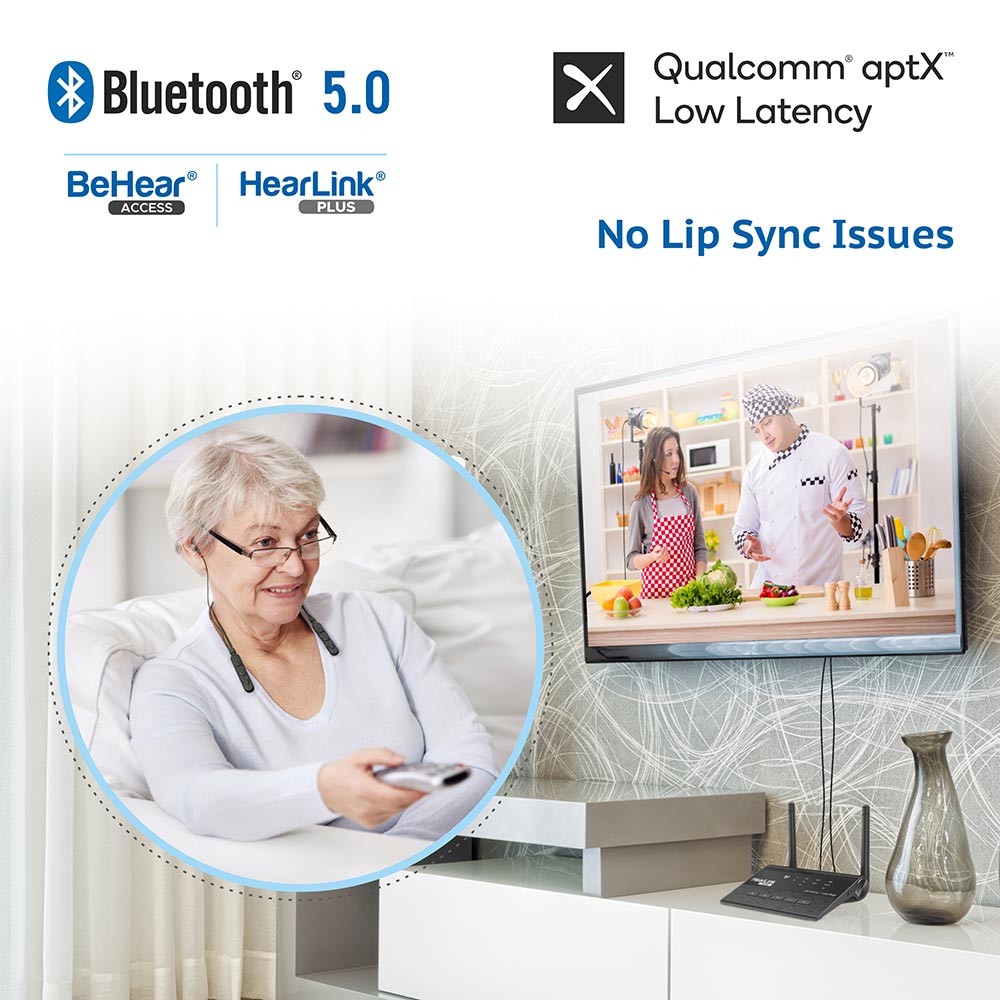
“I connected it – easily, and paired it with my Bose ColorLink portable speaker. Now I enjoy great sound. It remembers my device when I turn on the TV each time so I don’t have to re-pair it. I also have a set of Beyerdynamic Aventho Bluetooth headphones that I love, so my next step will be to pair them and see how that works out!”
I’m going to recommend the HearLink Plus to any of my friends who are looking to add Bluetooth capability to their HAT [editor’s note: HAT = Hearing Assistive Technology] arsenal.
There are many Bluetooth adapter devices available on the Internet, but this one does it all and does it well.
Larry Kavanaugh, Guest Service Associate at Bok Tower Gardens and Hearing Loss Advocate
HearLink PLUS uses either an analog or optical connection to the audio source (in this case, a flat-screen TV) to transmit sound wirelessly to a Bluetooth receiver, eliminating room reverberation and ambient noise that can degrade the listening experience. BeHear headset users get the extra benefit of having the crisp and clear TV audio personalized to suit their unique hearing profile. Get a discount when you purchase any BeHear amplifier (SMARTO, ACCESS, or PROXY) bundled with HearLink PLUS.
More Than Just A Hearing Amplifier

Barry Mishkind is a veteran broadcaster and editor at The Broadcasters’ Desktop Resource. He has also suffered from tinnitus for more than 50 years.
In his detailed review of BeHear ACCESS, recently published online, Barry listed his five criteria for a good set of headphones:
- They need to be comfortable.
- They need to reproduce audio clearly and cleanly.
- I like good noise reduction.
- The latency is not too long.
- The battery has to last long enough to be useful.
In his comprehensive article he details how BeHear ACCESS addresses and meets each criterion.
He summarizes his experience “…being able to tailor not only the levels but frequencies needed for each ear really does helps in a lot of ways. Furthermore, the other features make it a lot easier to hear everything from conversations to television programs. Especially welcome is the tinnitus masking feature.”
Overall, for any number of situations, it is entirely possible some users might even prefer the ACCESS II to traditional hearing aids. With an MSRP of $299, it certainly will not hit your pocketbook as hard.
Barry Mishkind, The Eclectic Engineer
BeHear ACCESS II with tinnitus masking is an excellent hearing enhancement device
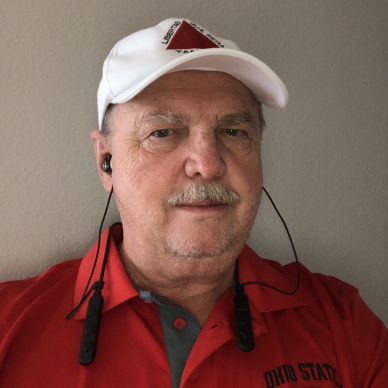
Michael Hayes, a long-time BeHear NOW user, learned that the new BeHear ACCESS model includes a feature designed to reduce the effects of tinnitus. He wrote us:
I have suffered from moderate hearing loss accompanied by tinnitus in my left ear for over 50 years due to inner ear nerve damage from an infection. Over the past 5 years I have experienced a measurable decrease in hearing in my right ear and an accompanying increase in tinnitus in that ear as well. I have tried numerous hearing aids over the years but none of them provided me with any improvement for my left ear and no reduction in tinnitus. Only when I tried the BeHear NOW with the personalized modulation technology that I gained some improvement in my left ear hearing.
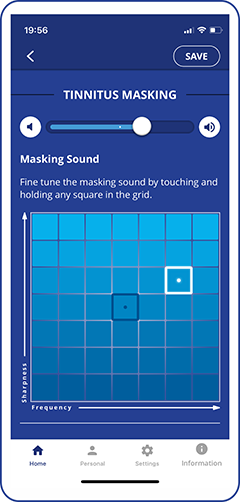
I installed the new BeHear ACCESS II application and ran the self test, set up my hearing profile, and then began the fine tuning of the tinnitus masking function. The setup was intuitive and within a few minutes I had chosen a masking tone that seemed to work best for both ears. The tinnitus masking function works well, albeit somewhat better for my right ear that has better natural hearing than my left ear that has the severe nerve damage.
In summary the BeHear ACCESS II with tinnitus masking is an excellent hearing enhancement device that I highly recommend for anyone who suffers from hearing loss and tinnitus.
I have experimented with far more expensive devices, (hearing aids), that in my opinion were inferior in performance to the Access II.
Michael Hayes, satisfied BeHear ACCESS customer
In conclusion, Michael states: “I am grateful to the staff at Alango for their dedication to hearing enhancement beyond the ordinary.”
Tinnitus Masking Therapy in BeHear
To learn more about the tinnitus sound therapy supported by BeHear ACCESS model II, watch the video below:
I listen in appreciation of the full sound which I have been missing for so long.
Just wanted to thank you and let you know just how much I am enjoying listening to my music collection with BeHear ACCESS. One of my grandsons encouraged me to sign up with Apple Music ($10/month) about a month ago. With this service I can ask Siri to play just about any piece of music ever recorded, giving the title of the piece and the artist or orchestra, and on it comes. I listen in appreciation of the full sound which I have been missing for so long. I then have the option to record the piece my library in my iPhone and can play it whenever I like.
Well, whenever I have the time and of late that is almost some time every day; I take a break from what I am doing and just listen. The majority of music I listen to is Jazz from my teen years – the big bands. The lyrics to these tunes are still in my head for some reason. This is such joy! Thank you.
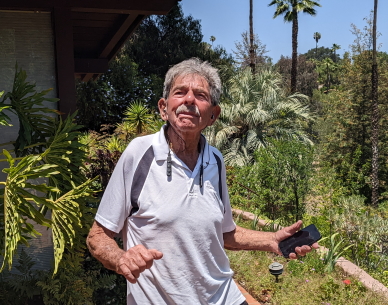
Compared to $4,000 for other hearing aids, this is a steal!
For an old dude like me who just wants to listen to the B-52s, talk on the phone, and hear the cat meowing to be let inside the house, the BeHear ACCESS is a pretty good fit.
Kevin Knauss, health insurance agent
Kevin Knauss is an independent agent for health insurance in California. He posts detailed and informative articles on his Web site https://insuremekevin.com.

In a recent post he reviewed BeHear ACCESS, complete with a humorous video testimonial (see below).
Here is Kevin’s summary of the BeHear ACCESS personal hearing amplifier:
- The music quality is very good. They are better than my really inexpensive wireless ear buds, probably not as good as some of the super expensive wireless ear buds on the market.
- Phone call quality is very good. No one has complained that they cannot understand me, an issue with some earbuds. I hear all of the callers very well. The sound seems a little heavy on the bass or light on the treble side.
- Hearing amplification is good. I have no experience with professionally fitted hearing aids that cost $2,000 to $5,000. Those products may replicate a more natural sound than the BeHear ACCESS.
Kevin took the time to document his experience with BeHear ACCESS in this very entertaining and informative YouTube video:
For more insights from Kevin, read his full article here.
I can now hear what is being said!
I believe in the product so much that I emailed all of my friends and recommended the product highly to them.
Robert W. from North Carolina
For quite a while I had a problem with my hearing that caused me to not be able to understand what was being said when at the movie theater, watching TV, and in crowds or in areas that had background sounds.

I tried several things to remedy the problem, including:
- turning the TV up so loud that it was hurting my ears (as well as those around me)
- getting low quality headphones that were attenuated to the higher frequencies
- I even purchased an amplifier that had a manual equalizer built in (so that I could tune the output to increase the frequencies that I was deficient in).
I never got around to hooking up the amp because I found WearandHear.com and after reading the reviews I decided to give the BeHear NOW a shot at helping me hear better. So, I purchased one.
I am glad to say that it was money well spent as I can now hear what is being said in all of the circumstances that were giving me extreme problems before.
The attribute that I like best is being able to set up profiles that are suited specifically for me for the different circumstances that I encounter. A profile for TV, a profile for the Movie Theater, a profile for crowds, a profile for areas that have background sounds, etc.
You may ask if I would recommend the WearandHear products. The answer is a definite yes. As a matter of fact, I believe in the product so much that I emailed all of my friends and recommended the product highly to them.
Is BeHear the perfect hearing solution?
Yes, the BeHear is a wonderful product. You won’t go wrong with it. Is it the perfect solution? No, but I’ve yet to find one and I’ve got friends that have the $5000-6000 hearing aids and I’m not sure that they’re hearing any better than I am with this.
Renny Spencer, photographer and paramedic
Between being a photographer for mainly for my own enjoyment and sometimes for others. I’m glad some of y’all enjoy seeing my photography as well also I’m a paramedic. I need my ears to be able to hear people, so between everything I do with family friends and my religious activities everything involved in work, hearing is something very important to me and so it’s been a challenge.
I’ve had hearing aids off and on for over 30 years now and should have probably had them even before that. I’ve never been happy with what I get, not been happy with what we’ve been, you know, how we hear, what’s involved, the various things that go on, and so I continued looking. The high dollar hearing aids didn’t do me much better than, you know, some of the cheaper ones. But I was able to locate this BeHear device.
It’s nice, it’s simple, it’s comfortable, serves multi-purposes. I’m able to use my phone off of it. I can listen to my music off my phone. When I’m outdoors and photographing I’m able to hear the birds, hear the deer walking, snorting things, that I miss a lot of times when I just use my ears without any hearing aid or hearing device. It’s been a wonderful product. It’s very simple.
Let me take mine off here. Good thing no one’s talking to me because I would have more difficulty hearing and understanding. I’d realize you’re talking but I’ve got that bad habit of just nodding my head and saying yes even though I don’t hear real well.
This is a really simple device. It’s easy to use. It functions well. I’ve been very happy with it. There are, you know, a few things. Like any device it’s not perfect but being able to hear my grandchildren. Being able to hear my wife most of the time (unless she’s mad at me) comes in real handy. It’s really beneficial when I’m working on the ambulance for my patients. I can hear them. I do have to take it off in order to use the device I use to be able to auscultate a patient’s heart and lung sounds.
The other things about it I like: it’s simple. You’ve got one button for on/off. You’ve got controls on either side. The Web site on BeHear gives you much better instructions. I’ll let them explain how it all works.
I do encourage you to try this out if you have hearing issues. The biggest issue I had was where you plug in to charge: it failed with my first set of BeHear. I contacted BeHear. Within just a short time they shipped me a new set along with the return label for the set that I had gotten, so I’ve got this set now. What I did to avoid that problem is I use a magnetic charger. It’s very simple and if you leave an insert in there and then it just clips on. (I’ll try to remember to actually place that in my YouTube video the link to this) but that allows it where I don’t have that wear and tear and chance of breaking that connection because that’s what happened last time, and I’ve had this happen on my cell phones and that’s where I had learned about these devices, as well.
So, do I recommend BeHear? Yes sir, yes ma’am, yes everyone, I do. I’d say I don’t get on camera, I hide behind the cameras, that’s just my preference, but I wanted to get on here long enough to tell you.
So, I do appreciate your time and I hope if you check this out, that you’re as happy and satisfied as I am. You have a great day now and enjoy hearing again!
Promoting Hearing Health in China with BeHear Hearing Self-Check Kiosks
You may know that our products are designed in Israel, and then manufactured in China. But did you know that BeHear products are sold in China in a wide variety of sectors? Here are a few examples of how BeHear technology improves the life of people in China.
Airport Stores
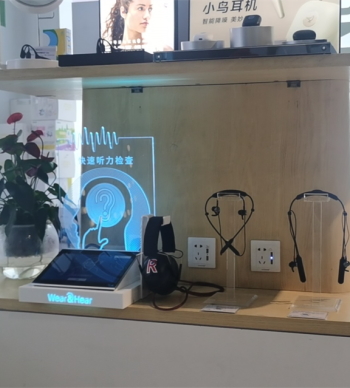
Enjoying your own personal music selection and video fare is one of the best ways to make air travel pleasant. We are thrilled to work with a retail partner in China to deploy hearing check kiosks and the full range of BeHear products in the AI Smart Times airport stores network in Shenzhen, Zhengzhou, Harbin, Xi’an, Hangzhou, and Chongqing.
While waiting for their flight, travelers can self-check their hearing and choose an appropriate listening enhancement solution from the BeHear product line.
Community Welfare Sector
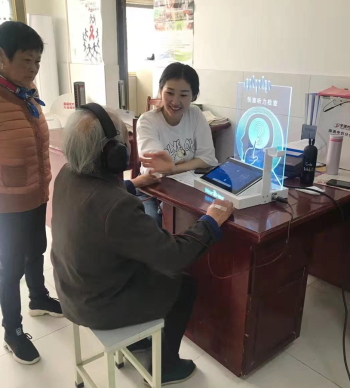
We have established partnerships in Nantong, Jiangsu Province to offer hearing check service using our kiosks in local community centers. BeHear products are offered to patients if they prefer the listening levels they experience with BeHear technology applied.
The same type of partnership is in effect in Shijiazhuang, Hebei Province, where our kiosks are installed in the local health management center serving the neighborhood.
Elderly Care Homes
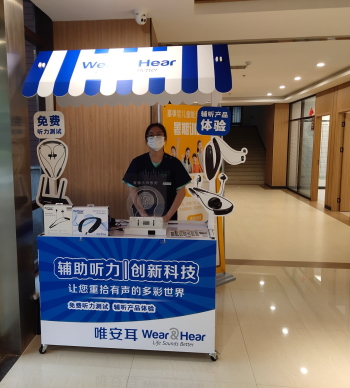
BeHear has partnered with AoYuan Group, a leading network of elderly care homes in Guangzhou, Guangdong Province. BeHear kiosks provide residents with the ability to check their hearing and experience the personalized improvement offered by BeHear technology.
The same program is underway with the China Everbright Group, one of the Fortune 500 companies with a subsidiary in the elderly care business in Zhengzhou, Henan Province. Three separate senior care centers in Zhengzhou are now offering BeHear hearing check services.
Hearables, innovative hearing solutions, create an opportunity for holistic audiology
The hearing healthcare market is rapidly changing, expanding to include a new category of hearing solutions called hearables – devices that offer different types of hybrids between hearing aids and consumer electronic headsets or ear buds. The delay in OTC (Over The Counter) legislation providing guidelines for the marketing of hearing aids, promised by the FDA to be released in August 2020, has not prevented companies from announcing DTC (Direct To Consumer) hearing augmentation solutions. On the contrary, several companies, including giants like Apple, are moving full speed ahead to implement hearing augmentation solutions for people with mild to moderate hearing degradation.
As more and more companies start offering hearing solutions that are not hearing aids, and customers recognize that it is possible to find alternatives to traditional hearing aids that are prescribed and fitted by a hearing professional, audiologists will need to consider evolving in the way they manage their businesses.
What does the increase in the availability of non-traditional hearing solutions mean for audiologists?
As Kim Cavitt, AuD advised on a recent “Future Ear Radio” podcast entitled “How Hearing Professionals Can Thrive in an Expanding Market”, the best course for audiologists going forward is to “practice audiology: decouple your identity from the product and simply provide the care at a professional level.” Dr. Cavitt believes that audiologists need to adopt a more holistic approach. Instead of focusing on selling hearing aids, hearing professionals should be addressing the specific client’s requirement and counseling them on the best solution for their current hearing status. They can use their audiological expertise to diagnose the client’s condition and then help them navigate the wide variety of available options to steer them toward high-quality solutions.
In other words, this move would require a revised business model. Instead of relying mainly on hearing aid sales for income, provision of services would sustain the practice. Service might include finding ways to increase awareness regarding the importance of hearing health and closing the gap between the first stages of hearing degradation and adopting technological support.
How can audiologists stay relevant as providers of hearing solutions?
Psychological factors create resistance to adopting hearing aids, but most people are unaware that untreated hearing loss damages physical, emotional, and even mental wellbeing. Familiarity with the entire gamut of technological options, from high-end hearing aids to situation-specific hearing enhancers (like TV listening solutions) enables audiologists to offer solutions appropriate to the customer’s state of mind, as well as the condition of their ears. Since the holistic approach is also time-consuming, it would be benefit audiologists to vet the DTC (Direct to Consumer) options and then refer clients to their own e-Commerce store to peruse relevant options there. This would cut down on clinic time and keep the client at the center of the process, while providing a new revenue stream for the audiologist.
Becoming a knowledge source for customers who find it difficult to comprehend and calculate the pros and cons of different options available is an important way to stay relevant as a hearing professional.
While attending the recent “Future of Hearing Healthcare Event” sponsored by Hearing Health & Technology Matters, Kathy Folino, an audiologist at Amplifon Clinic in Niagara Falls, discovered the BeHear PROXY, a hearing enhancement neck speaker developed by Alango Technologies. Kathy reports: “I used the BeHear PROXY myself and then sent it to my dad to try out as well. I think it’s a great product. The sound quality was clear, and the volume range was great (thinking of hard of hearing clients). It was very user friendly and easy to pair the Bluetooth and start using. My dad loved using it as a speaker and he even used the headphones at times too. It improved his ability to hear the TV clearly and understand what was being said. His partner liked it too because the TV wasn’t too loud for her!”
Products like BeHear PROXY make it easy for audiologists to adopt a more holistic approach to helping people with hearing loss. It’s a great option for clients who are hesitant to get hearing aids, and/or just want something for the TV.
Individuals who became audiologists to reconnect those with hearing loss to family, friends, and nature’s pleasures will appreciate the opportunity provided by the new hearing enhancement solutions to serve more people. With their backgrounds in science and technology, hearing professionals are well positioned to help clients navigate the rapidly growing field of options. Clients will benefit from an easier path to hearing health with a trusted advisor, and audiologists will be rewarded with their loyalty for years to come.
Written by Ruth Bridger, Marketing Director of Assistive Products at Alango Technologies.
Why use a neck speaker with hearing aids?
Use BeHear PROXY neck speaker with hearing aids, slow down the speech in real time or run the hearing test with the W&H app.
The Facebook community HoH DEAF NOT STUPID posts and discusses resources and organizations that are of use to deaf and hard of hearing people. This is the review they posted about BeHear PROXY.
This neck speaker and personal hearing amplifier sits comfortably around your shoulders and can be used in two ways. There’s a small speaker on each side of the device which deliver a clear, good quality stereo sound. The beauty of these speakers is that you can use them in conjunction with your hearing aids to tailor the sound to your requirement. The device doesn’t transmit audio for reception via the aids’ T switch so you use the aids’ microphones. There’s a pair of volume control buttons on the right-hand side of the device, which can amplify at up to about 105 dB. The downside is that anyone in your vicinity can also hear the output.
A pair of extractable earbuds is housed, one in each arm of the device. Pull them out to use them and press buttons for them to be automatically retracted into their housing. The technical specification of the device rates the output of these earbuds at up to about 105 dB. Our experience with them was that, whilst hearing people found their output satisfactory, people who are hard of hearing had difficulty with them – and, of course, you have to remove your aids to use the earbuds.
The PROXY is Bluetooth enabled, with a range of up to about ten meters, and can support two simultaneously connected devices – say the TV and your phone (if your TV isn’t Bluetooth enabled, you can purchase a Bluetooth transmitter to attach to it).
When used in conjunction with your Smartphone you’d need to use the earbuds for call privacy and, as already mentioned, this might pose a problem for Hard of Hearing users. The two buttons previously mentioned control the call volume. Between the two volume buttons is a third, multi-purpose button. This button is used, depending on the length and number of presses, to reject, accept and end calls and to redial the last number. A built-in microphone makes incoming calls hands free and also enables the amplification of in-room conversations when the earbuds are used and also allow you to hear ambient sounds whilst listening to music.
A Smartphone app. has a feature that lets you slow down incoming speech slightly, to improve intelligibility. The same app. lets you tailor the PROXY to your own requirements, running your own hearing test and turning features on and off.
When listening to music, possibly streamed from your Smartphone, depending on the length of your press, the volume buttons can also be use to skip to the next or previous track. The center button pauses and plays the audio.
The device is powered by an internal rechargeable battery with a charging time of about three hours. When using the loudspeakers, a full charge gives about ten hours listening and, with the earbuds, about forty hours. A USB charging lead is supplied.
The BeHear PROXY is marketed by Wear & Hear at $189 including a one-year warranty and free worldwide shipping. A thirty-day free trial is available.
Hear better with BeHear EasyListen™ technology that slows down speech in real time
“Leave your name and number at the tone. S l o w l y.”
Susan’s father is in his 80s. His mind is sharp. He has no problem using his mobile for phone and even video calls. Unlike the younger generation, he still uses voicemail, wants to listen to messages and call people back. That’s why he recorded a special message for people trying to reach him, requesting they leave their number, speaking slowly.
Having to strain to catch what someone else is saying is both annoying and stressful. This phenomenon is not necessarily a function of a hearing problem (although it may be). Some people are simply “fast talkers,” people who speak more quickly than most, making it hard to catch everything they say. There are several additional situations where rapid speech could be a problem that makes us wish it were possible to slow down the words of the person on the other side of the phone:
- Age – As we age our reflexes become slower. In the same vein, the gap between hearing and comprehension increases i.e., it takes more time for the brain to process the sound and translate it into meaning.
- Geography – In the U.S.A, for example, the southern drawl is very different from the clipped speech of a New Yorker. The trend to use offshore employees for customer support introduces unfamiliar accents. When someone sounds different than what we are used to hearing, their speech is harder for our brain to process.
- Language – different languages are spoken at different paces, and it can be challenging to keep up with a conversation that is not in your native tongue.
EasyListenTM technology is integrated into BeHear hearing amplification headsets, enabling users to slow down speech during mobile calls and while listening to voice messages.
For people experiencing even mild hearing loss, EasyListenTM technology to slow down speech can be particularly helpful. Hearing degradation affects our ability to hear certain sounds that make up words, such as the letters and letter combinations f, s, sh, th, etc. In this case the brain needs extra time to determine what was said, based on overall context. In such cases, people often find themselves unduly tired without realizing that this is caused by the added strain and stress of trying to decipher words that have become unclear.
“Time stretching” technologies for speech modification are not new. EasyListenTM differs from these, creating a more complex and intelligent standard for the dynamic real-time control of speech. Sophisticated speech analysis is performed, and only those parts that are important for understanding, but just too fast, are slowed down to the extent that is necessary. This is how the speech is slowed down, without altering the natural feel of the conversation:
- Natural pauses occur in each typical conversation (such as when the speaker takes a breath). Shortening such pauses is used to reduce the delay that is generated by slowing down the audio signal. However, if the speaker talks fast continuously, with no pauses, EasyListenTM will gradually stop slowing down his/her monologue when the maximal allowed delay is exceeded.
EasyListenTM technology is language-independent and works equally well with Western and Eastern tonal languages. It can be activated during mobile (cell) phone calls only, not during live conversations or television/movie viewing.
BeHear hearing amplification headsets are designed to help make life sound better, particularly for people with mild to moderately-severe hearing loss. There are numerous benefits to reducing the strain of trying to hear or trying to keep up with someone who is simply speaking too fast, including: stress reduction, increased well-being, and more pleasant interpersonal connections.
“Quit yelling at the people in the supermarket for the wrong reasons,” says Mr. Berger after trying his new hearing device.
In this interesting BeHear NOW review Robert M. Berger provides his perspective on hearing aids, overpriced hearing devices, and explains why BeHear NOW fulfills his hearing requirements.
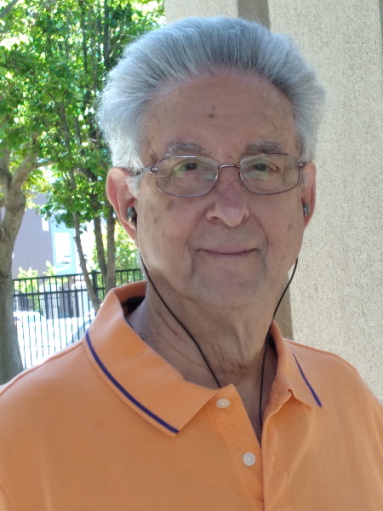
My hearing has been fading for several years and recently I began shopping for a fix. I was appalled at the pricing of established hearing aids but heard that the U.S. government was now allowing certain categories of hearing devices to be sold over the counter and the market responded with several offerings at various prices. After an investigation of the pros and cons of each, I selected the Wear & Hear brand because of the messages on their home site and they met the needs of my hearing problem which were:
- It must customize to an audiogram. WH tests you on their app and adjusts to the results.
- I wanted a device where I could fine tune the sound. WH does that.
- It must be rechargeable. No batteries. WH is rechargeable and gives you multiple warnings when the battery is low.
- I wanted it to adjust for different environments. WH does indoor, outdoor, crowds and music modes.
- I wanted easily adjustable volume. I don’t have to take the device out of my ear to adjust volume, it’s on the cord.
- Must have Bluetooth phone connections. Got that.
- I needed to afford it. Their price was right.
I should also add the videos on both the PC and phone were complete and easily understandable. Once set up, a nightly recharge next to my phone was all that was necessary. For me, I didn’t want to start experimenting at $2000-3000, when I could do as well for 10% of that investment. There is a 30-day return policy and good customer service.
I’m hearing things I haven’t heard for years, movies, TV, my turn signal, my grandchildren, other adults, conversations in Starbucks, music. I don’t blast the car radio with others in the car and the neighbors two counties away have quit complaining that my TV is too loud.
Everyone needs to make their own decision, but I feel that some of the higher priced devices are mostly markup, and in many cases obsolete technology that they have been selling for years.
So, as you can tell I am happy with it. I recommend you take a look at their website and see if it meets your needs. The website is the most informative and useful of any I visited. Good luck and quit yelling at the people in the supermarket for the wrong reasons.
A quality hearing device should not be a luxury!
That’s why we developed the BeHear NOW hearing amplification headset and made sure that, with all the advanced technology inside, it remains an affordable hearing device. BeHear NOW hearing amplifier helps to boost your hearing and works in four hearing modes. Wondering about the hearing device price? See that and more information on the BeHear NOW product page.
Hearing loss impacts relationships – with BeHear NOW I can hear my wife
Hearing loss negatively impacts relationships, creating strain between husband and wife, making it harder to connect and enjoy each other’s company. Nobby uses BeHear NOW when he is with his wife and to listen to music while doing other activities he enjoys.
My name is Norman Elliott Smith, although people refer to me as “Nobby”. I’ve been called Nobby for at least the last 70 years so that was since I was 10 years old. I’ve practiced here in Israel both as a pharmacist and as an optometrist.
My wife complained many times that she’s repeating things once, twice, or three times. I suggested that she actually was mumbling, which didn’t go down very well. And so I ended up having a hearing test, which is very similar, believe it or not, to what the test this machine [BeHear] offers. In fact, I can’t see really any difference. I use it obviously, when I’m near my wife, which is most of the time, and it certainly helps.
I use it with the Bluetooth particularly to listen to music. And it works very well when I’m working out in a gym, on a treadmill. BeHear NOW easy to wear, and I’ve enjoyed using it up to now, and hopefully will continue to.
According to research discussed in Healthy Hearing, hearing loss impacts relationships in a number of ways and can be a major source of stress: “Both the hearing-impaired participants and their close partners bemoaned the loss of spontaneity and the difficulties of sharing small unexpected incidents, observations and small talk in their everyday interactions.”
If you or someone you love is experiencing hearing loss, don’t let it negatively impact your relationships! BeHear is an easy to implement solution to make life sound better. Here are some useful tips on how to talk to your partner about hearing loss.
